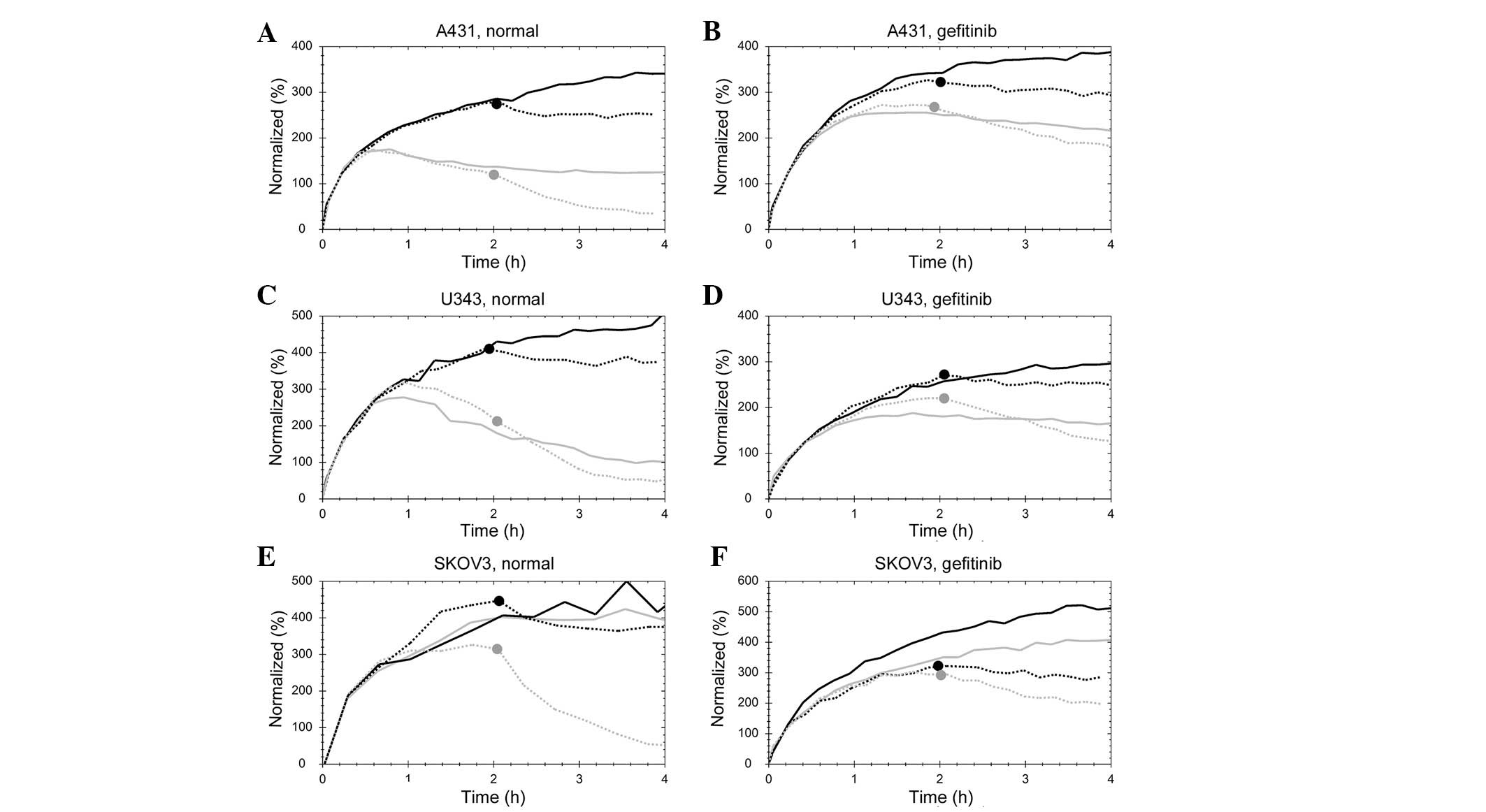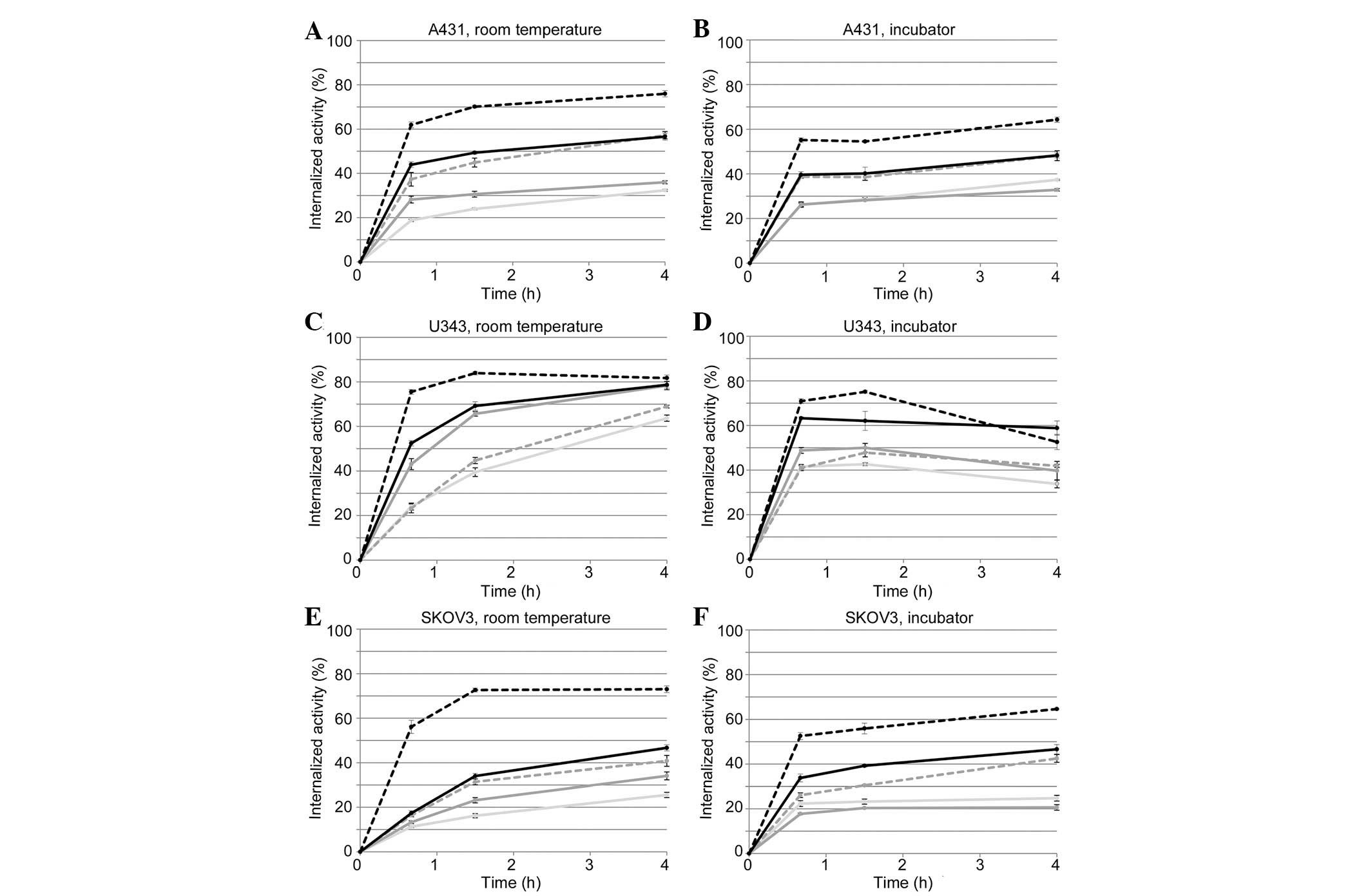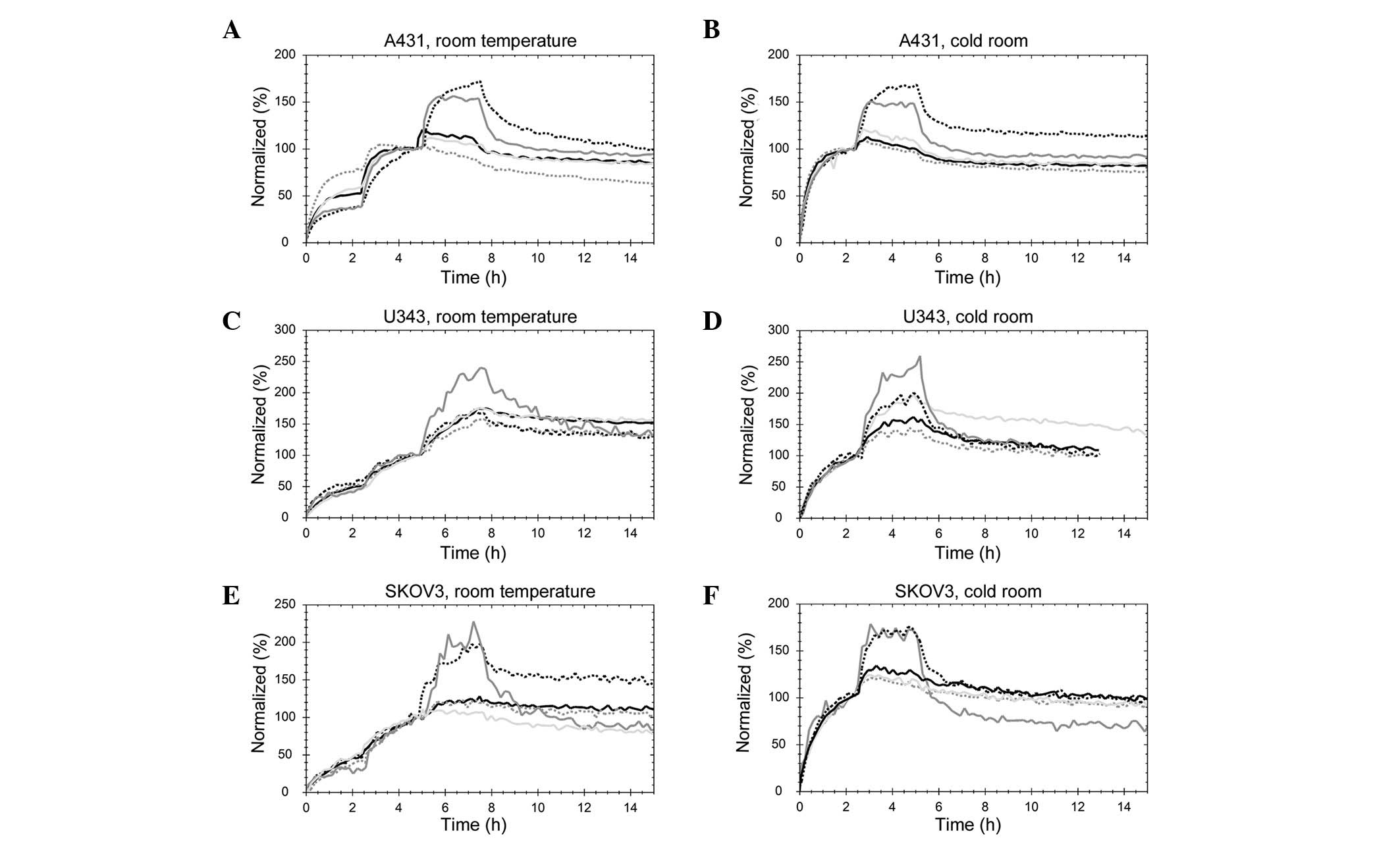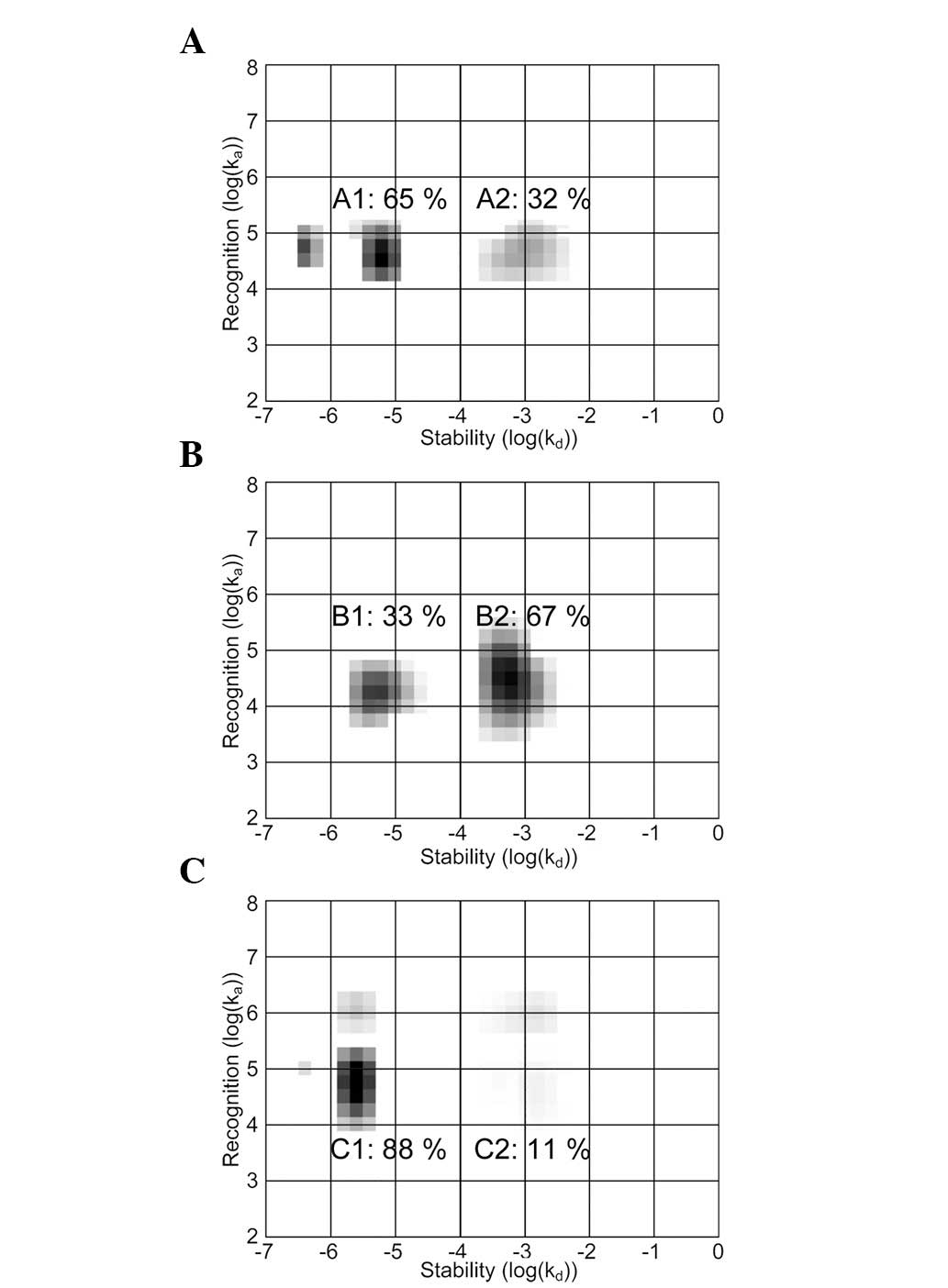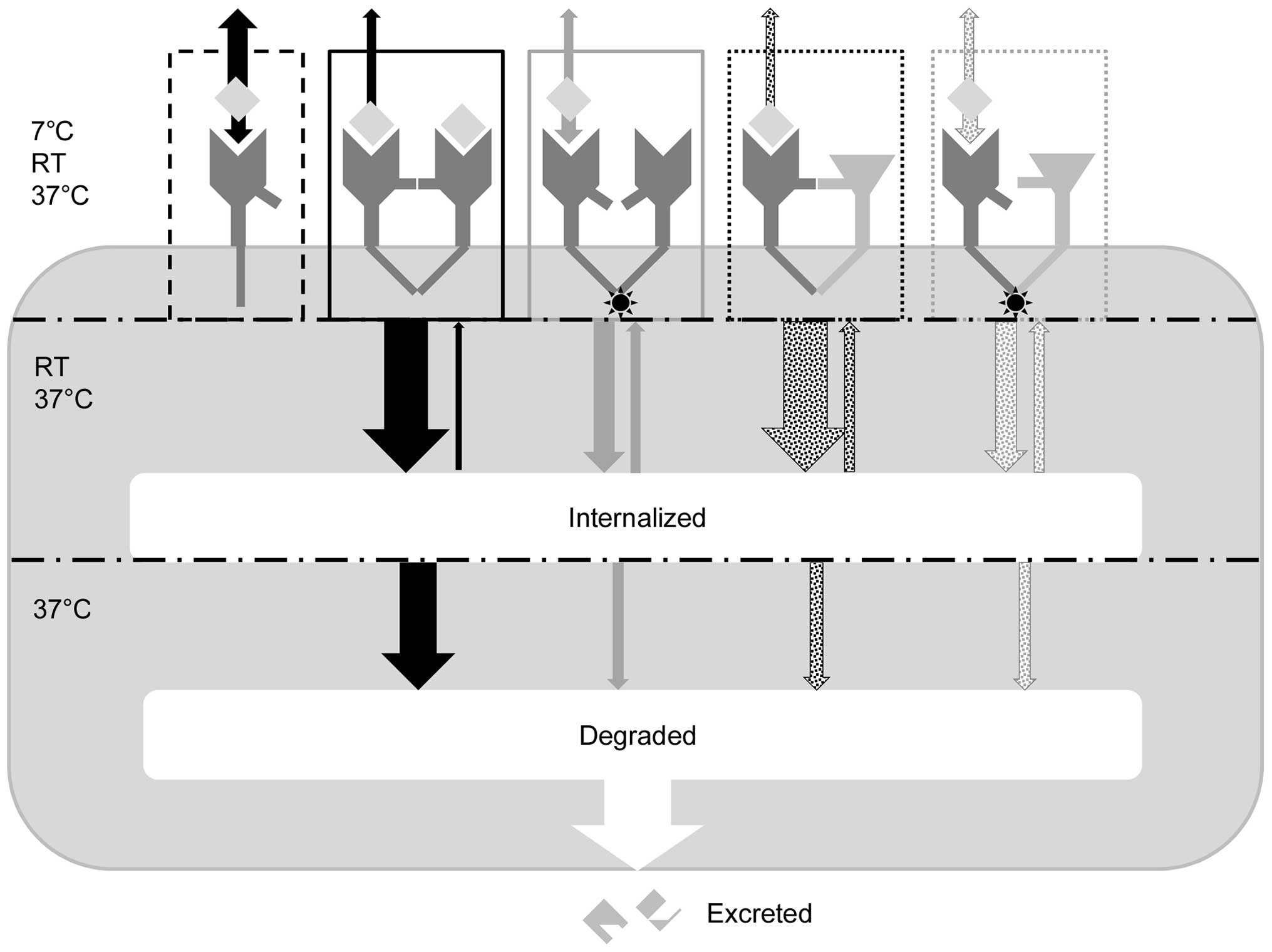|
1
|
Scaltriti M and Baselga J: The epidermal
growth factor receptor pathway: a model for targeted therapy. Clin
Cancer Res. 12:5268–5272. 2006. View Article : Google Scholar : PubMed/NCBI
|
|
2
|
Yarden Y and Sliwkowski MX: Untangling the
ErbB signalling network. Nat Rev Mol Cell Biol. 2:127–137. 2001.
View Article : Google Scholar : PubMed/NCBI
|
|
3
|
Blume-Jensen P and Hunter T: Oncogenic
kinase signalling. Nature. 411:355–365. 2001. View Article : Google Scholar : PubMed/NCBI
|
|
4
|
Ferguson KM, Berger MB, Mendrola JM, Cho
HS, Leahy DJ and Lemmon MA: EGF activates its receptor by removing
interactions that autoinhibit ectodomain dimerization. Mol Cell.
11:507–517. 2003. View Article : Google Scholar : PubMed/NCBI
|
|
5
|
Garrett TP, McKern NM, Lou M, et al:
Crystal structure of a truncated epidermal growth factor receptor
extracellular domain bound to transforming growth factor alpha.
Cell. 110:763–773. 2002. View Article : Google Scholar
|
|
6
|
Ogiso H, Ishitani R, Nureki O, et al:
Crystal structure of the complex of human epidermal growth factor
and receptor extra-cellular domains. Cell. 110:775–787. 2002.
View Article : Google Scholar : PubMed/NCBI
|
|
7
|
Zhang X, Gureasko J, Shen K, Cole PA and
Kuriyan J: An allosteric mechanism for activation of the kinase
domain of epidermal growth factor receptor. Cell. 125:1137–1149.
2006. View Article : Google Scholar : PubMed/NCBI
|
|
8
|
Liu P, Sudhaharan T, Koh RM, et al:
Investigation of the dimerization of proteins from the epidermal
growth factor receptor family by single wavelength fluorescence
cross-correlation spectroscopy. Biophys J. 93:684–698. 2007.
View Article : Google Scholar
|
|
9
|
Tao RH and Maruyama IN: All EGF(ErbB)
receptors have preformed homo- and heterodimeric structures in
living cells. J Cell Sci. 121:3207–3217. 2008. View Article : Google Scholar : PubMed/NCBI
|
|
10
|
Björkelund H, Gedda L, Barta P, Malmqvist
M and Andersson K: Gefitinib induces epidermal growth factor
receptor dimers which alters the interaction characteristics with
125I-EGF. PLoS One. 6:e24739
|
|
11
|
Bollig-Fischer A, Dziubinski M, Boyer A,
Haddad R, Giroux CN and Ethier SP: HER-2 signaling, acquisition of
growth factor independence, and regulation of biological networks
associated with cell transformation. Cancer Res. 70:7862–7873.
2010. View Article : Google Scholar : PubMed/NCBI
|
|
12
|
Worthylake R, Opresko LK and Wiley HS:
ErbB-2 amplification inhibits down-regulation and induces
constitutive activation of both ErbB-2 and epidermal growth factor
receptors. J Biol Chem. 274:8865–8874. 1999. View Article : Google Scholar : PubMed/NCBI
|
|
13
|
Tzahar E, Waterman H, Chen X, et al: A
hierarchical network of interreceptor interactions determines
signal transduction by Neu differentiation factor/neuregulin and
epidermal growth factor. Mol Cell Biol. 16:5276–5287. 1996.
|
|
14
|
Björkelund H, Gedda L and Andersson K:
Comparing the epidermal growth factor interaction with four
different cell lines: intriguing effects imply strong dependency of
cellular context. PLoS One. 6:e165362011.PubMed/NCBI
|
|
15
|
Lax I, Bellot F, Howk R, Ullrich A, Givol
D and Schlessinger J: Functional analysis of the ligand binding
site of EGF-receptor utilizing chimeric chicken/human receptor
molecules. EMBO J. 8:421–427. 1989.PubMed/NCBI
|
|
16
|
Ullrich A and Schlessinger J: Signal
transduction by receptors with tyrosine kinase activity. Cell.
61:203–212. 1990. View Article : Google Scholar : PubMed/NCBI
|
|
17
|
Ozcan F, Klein P, Lemmon MA, Lax I and
Schlessinger J: On the nature of low- and high-affinity EGF
receptors on living cells. Proc Natl Acad Sci USA. 103:5735–5740.
2006. View Article : Google Scholar : PubMed/NCBI
|
|
18
|
Baselga J: Targeting tyrosine kinases in
cancer: the second wave. Science. 312:1175–1178. 2006. View Article : Google Scholar : PubMed/NCBI
|
|
19
|
Ciardiello F: Epidermal growth factor
receptor tyrosine kinase inhibitors as anticancer agents. Drugs.
60(Suppl 1): 25–32, Discussion 41–22,. 2000. View Article : Google Scholar : PubMed/NCBI
|
|
20
|
Baselga J and Averbuch SD: ZD1839
(‘Iressa’) as an anticancer agent. Drugs. 60(Suppl 1): 33–40,
Discussion 41–42,. 2000.
|
|
21
|
Pollack VA, Savage DM, Baker DA, et al:
Inhibition of epidermal growth factor receptor-associated tyrosine
phosphorylation in human carcinomas with CP-358,774: dynamics of
receptor inhibition in situ and antitumor effects in athymic
mice. J Pharmacol Exp Ther. 291:739–748. 1999.
|
|
22
|
Xia W, Liu LH, Ho P and Spector NL:
Truncated ErbB2 receptor (p95ErbB2) is regulated by heregulin
through heterodimer formation with ErbB3 yet remains sensitive to
the dual EGFR/ErbB2 kinase inhibitor GW572016. Oncogene.
23:646–653. 2004. View Article : Google Scholar : PubMed/NCBI
|
|
23
|
Kris MG, Natale RB, Herbst RS, et al:
Efficacy of gefitinib, an inhibitor of the epidermal growth factor
receptor tyrosine kinase, in symptomatic patients with non-small
cell lung cancer: a randomized trial. JAMA. 290:2149–2158. 2003.
View Article : Google Scholar : PubMed/NCBI
|
|
24
|
Petrelli F, Borgonovo K, Cabiddu M and
Barni S: Efficacy of EGFR tyrosine kinase inhibitors in patients
with EGFR-mutated non-small cell lung cancer: a meta-analysis of 13
randomized trials. Clin Lung Cancer. 13:107–114. 2012. View Article : Google Scholar : PubMed/NCBI
|
|
25
|
Jamal-Hanjani M and Spicer J: Epidermal
growth factor receptor tyrosine kinase inhibitors in the treatment
of epidermal growth factor receptor-mutant non-small cell lung
cancer metastatic to the brain. Clin Cancer Res. 18:938–944. 2012.
View Article : Google Scholar
|
|
26
|
Kwak EL, Sordella R, Bell DW, et al:
Irreversible inhibitors of the EGF receptor may circumvent acquired
resistance to gefitinib. Proc Natl Acad Sci USA. 102:7665–7670.
2005. View Article : Google Scholar : PubMed/NCBI
|
|
27
|
Nishimura Y, Bereczky B and Ono M: The
EGFR inhibitor gefitinib suppresses ligand-stimulated endocytosis
of EGFR via the early/late endocytic pathway in non-small cell lung
cancer cell lines. Histochem Cell Biol. 127:541–553. 2007.
View Article : Google Scholar : PubMed/NCBI
|
|
28
|
Bublil EM and Yarden Y: The EGF receptor
family: spearheading a merger of signaling and therapeutics. Curr
Opin Cell Biol. 19:124–134. 2007. View Article : Google Scholar : PubMed/NCBI
|
|
29
|
Lichtner RB, Menrad A, Sommer A, Klar U
and Schneider MR: Signaling-inactive epidermal growth factor
receptor/ligand complexes in intact carcinoma cells by quinazoline
tyrosine kinase inhibitors. Cancer Res. 61:5790–5795. 2001.
|
|
30
|
Arteaga CL, Ramsey TT, Shawver LK and
Guyer CA: Unliganded epidermal growth factor receptor dimerization
induced by direct interaction of quinazolines with the ATP binding
site. J Biol Chem. 272:23247–23254. 1997. View Article : Google Scholar : PubMed/NCBI
|
|
31
|
Stamos J, Sliwkowski MX and Eigenbrot C:
Structure of the epidermal growth factor receptor kinase domain
alone and in complex with a 4-anilinoquinazoline inhibitor. J Biol
Chem. 277:46265–46272. 2002. View Article : Google Scholar : PubMed/NCBI
|
|
32
|
Wood ER, Truesdale AT, McDonald OB, et al:
A unique structure for epidermal growth factor receptor bound to
GW572016 (Lapatinib): relationships among protein conformation,
inhibitor off-rate, and receptor activity in tumor cells. Cancer
Res. 64:6652–6659. 2004. View Article : Google Scholar
|
|
33
|
Barros FF, Powe DG, Ellis IO and Green AR:
Understanding the HER family in breast cancer: interaction with
ligands, dimerization and treatments. Histopathology. 56:560–572.
2010. View Article : Google Scholar : PubMed/NCBI
|
|
34
|
Wells A: EGF receptor. Int J Biochem Cell
Biol. 31:637–643. 1999. View Article : Google Scholar
|
|
35
|
Haslekas C, Breen K, Pedersen KW,
Johannessen LE, Stang E and Madshus IH: The inhibitory effect of
ErbB2 on epidermal growth factor-induced formation of
clathrin-coated pits correlates with retention of epidermal growth
factor receptor-ErbB2 oligomeric complexes at the plasma membrane.
Mol Biol Cell. 16:5832–5842. 2005. View Article : Google Scholar
|
|
36
|
Hommelgaard AM, Lerdrup M and van Deurs B:
Association with membrane protrusions makes ErbB2 an
internalization-resistant receptor. Mol Biol Cell. 15:1557–1567.
2004. View Article : Google Scholar : PubMed/NCBI
|
|
37
|
Lenferink AE, Pinkas-Kramarski R, van de
Poll ML, et al: Differential endocytic routing of homo- and
hetero-dimeric ErbB tyrosine kinases confers signaling superiority
to receptor heterodimers. EMBO J. 17:3385–3397. 1998. View Article : Google Scholar : PubMed/NCBI
|
|
38
|
Westermark B, Magnusson A and Heldin CH:
Effect of epidermal growth factor on membrane motility and cell
locomotion in cultures of human clonal glioma cells. J Neurosci
Res. 8:491–507. 1982. View Article : Google Scholar : PubMed/NCBI
|
|
39
|
Carlsson J: Potential for clinical
radionuclide-based imaging and therapy of common cancers expressing
EGFR-family receptors. Tumour Biol. 33:653–659. 2012. View Article : Google Scholar : PubMed/NCBI
|
|
40
|
Björkelund H, Gedda L and Andersson K:
Avoiding false negative results in specificity analysis of
protein-protein interactions. J Mol Recognit. 24:81–89.
2010.PubMed/NCBI
|
|
41
|
Sundberg AL, Almqvist Y, Orlova A, et al:
Combined effect of gefitinib (‘Iressa’, ZD1839) and targeted
radiotherapy with 211At-EGF. Eur J Nucl Med Mol Imaging.
30:1348–1356. 2003.
|
|
42
|
Nordberg E, Friedman M, Gostring L, et al:
Cellular studies of binding, internalization and retention of a
radiolabeled EGFR-binding affibody molecule. Nucl Med Biol.
34:609–618. 2007. View Article : Google Scholar : PubMed/NCBI
|
|
43
|
Bjorke H and Andersson K: Automated,
high-resolution cellular retention and uptake studies in vitro.
Appl Radiat Isot. 64:901–905. 2006. View Article : Google Scholar : PubMed/NCBI
|
|
44
|
Hunter WM and Greenwood FC: Preparation of
iodine-131 labelled human growth hormone of high specific activity.
Nature. 194:495–496. 1962. View Article : Google Scholar : PubMed/NCBI
|
|
45
|
Bjorke H and Andersson K: Measuring the
affinity of a radioligand with its receptor using a rotating cell
dish with in situ reference area. Appl Radiat Isot. 64:32–37. 2006.
View Article : Google Scholar : PubMed/NCBI
|
|
46
|
Svitel J, Balbo A, Mariuzza RA, Gonzales
NR and Schuck P: Combined affinity and rate constant distributions
of ligand populations from experimental surface binding kinetics
and equilibria. Biophys J. 84:4062–4077. 2003. View Article : Google Scholar
|
|
47
|
Barta P, Malmberg J, Melicharova L, et al:
Protein interactions with HER-family receptors can have different
characteristics depending on the hosting cell line. Int J Oncol.
40:1677–1682. 2012.PubMed/NCBI
|
|
48
|
Huber W: A new strategy for improved
secondary screening and lead optimization using high-resolution SPR
characterization of compound-target interactions. J Mol Recognit.
18:273–281. 2005. View Article : Google Scholar : PubMed/NCBI
|















